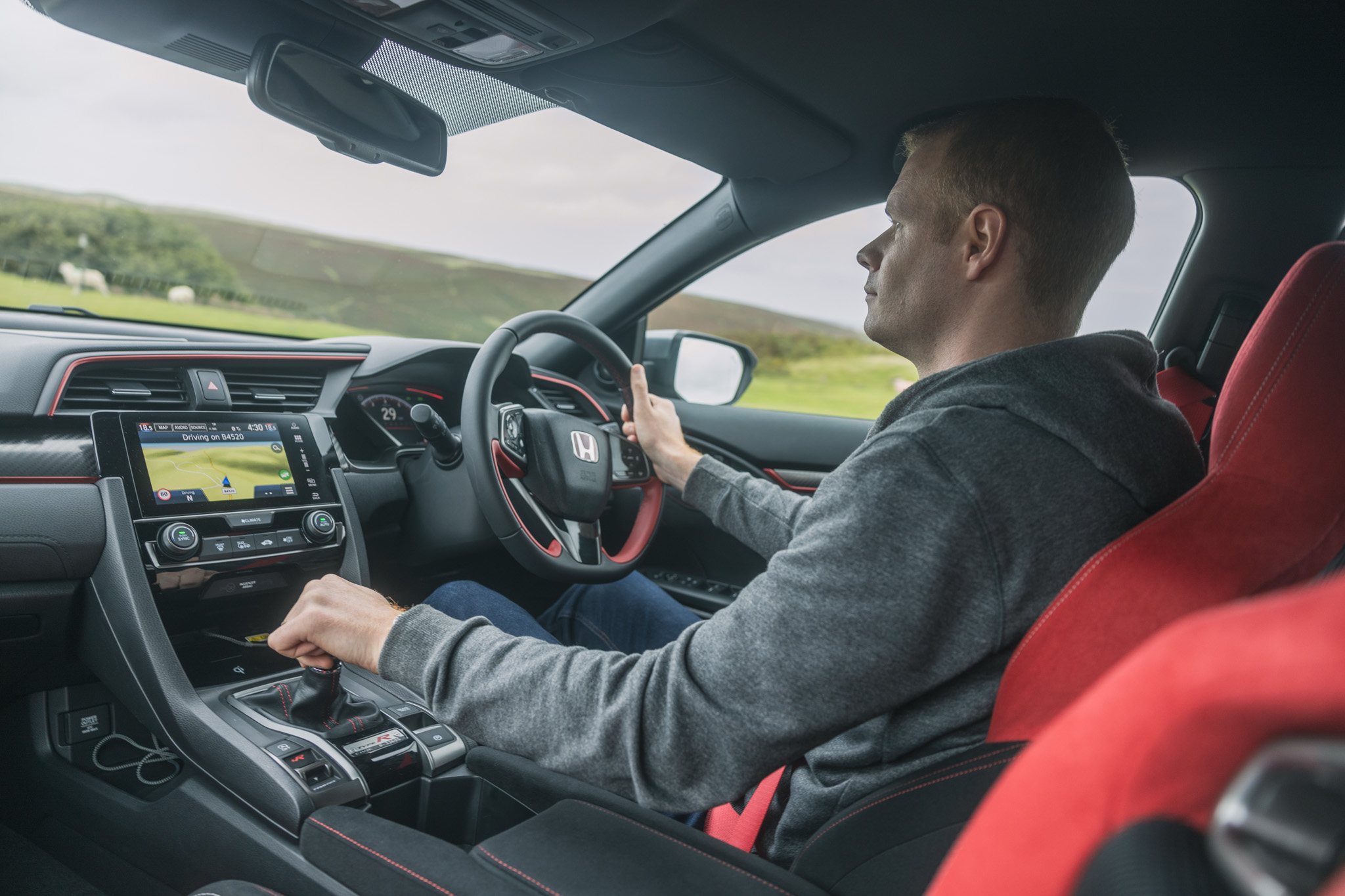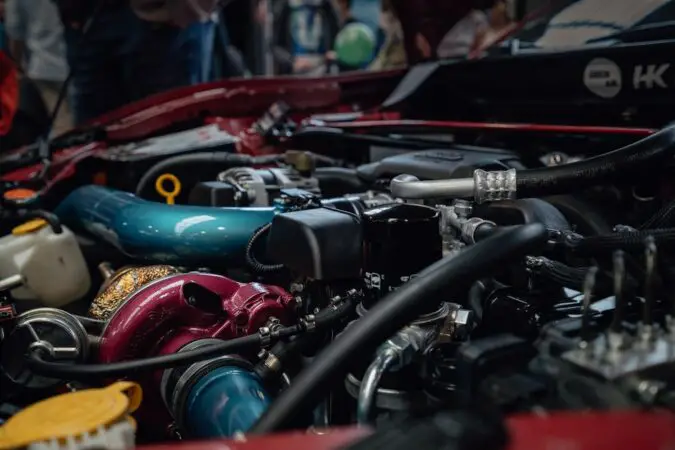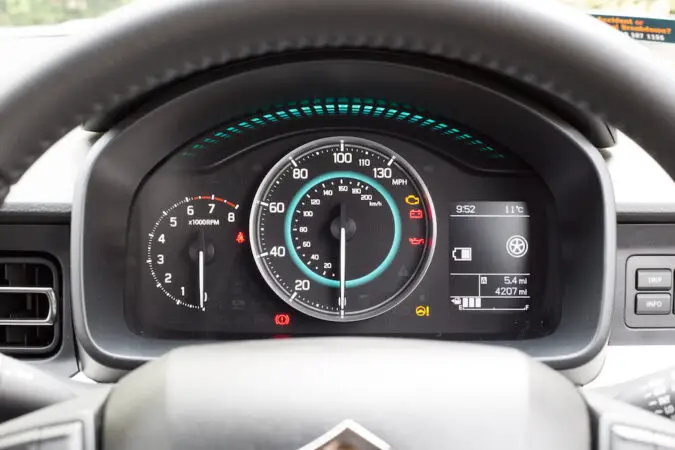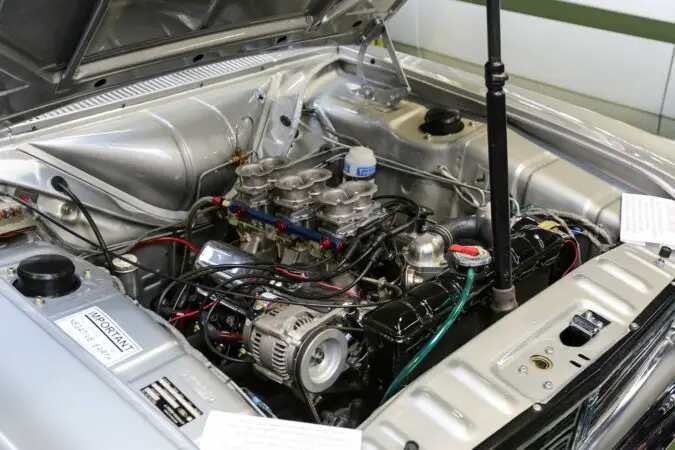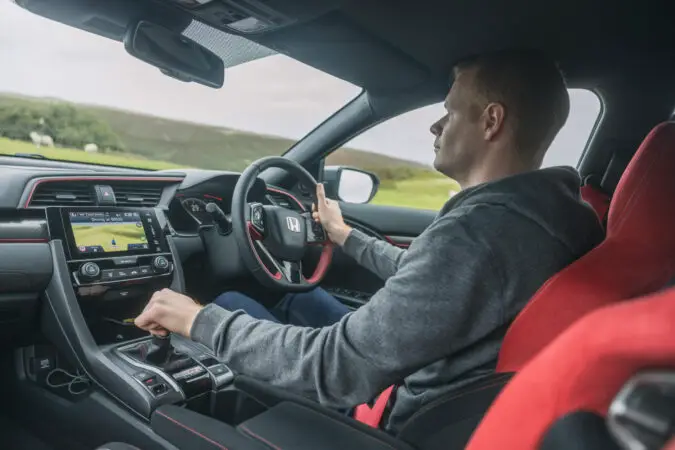Did you know that pilots use a system called “fly by wire” to control their airplanes? Basically, this system has replaced the traditional manual flight controls with an electronic system. Guess what? Vehicle manufacturers already use this in their vehicles as we speak. It’s called drive by wire. In this article, we will tell you all you need to know about it!
This technology was first introduced in the late 80s. The chance of your vehicle having this technology without you knowing is highly likely. Electronic vehicle control systems have been increasingly becoming popular in recent times. This is a highly complex system. They have a number of advantages over traditional systems.
During the length of this article, we will be discussing many aspects of this system with you. We will first discuss the history of these systems and their advantages. Then, we will compare them with traditional sections. In the end, you will be an expert on these electronics in your car. Let’s start off the article by looking into the basics of this system.
What Is Drive By Wire
Drive by wire is a complex electronic system. It is controlling some important vehicle functions. The braking system and handling systems are some of them. There are 3 main categories of the drive by wire system.
1. Brake By Wire
This is a drive by wire system for the brakes. There are 2 main types of this technology.
Electro-Hydraulic Brake System
Sensors monitor the brake pedal movement. Then, the control unit receives this information. The control unit determines the strength of brakes that should be applied. After that, the hydraulic brake calipers activate. This system is somewhat similar to normal brakes due to the use of hydraulics. Wet breaks are another name for this system.
Electromechanical Brake Systems
Here, sensors decide the required brake force. This system does not use hydraulics. Instead, actuators take care of brake activation. This system is very reliable.
2. Steer By Wire
This is a drive by wire for the steering system. Here, there is no physical connection between the steering wheel and the tires. Instead, electronic signals transmit the signals between components. This system replaces rack and pinion systems.
3. Throttle By Wire
This is the most popular implementation of the drive by wire technology. This system eliminates the use of throttle cables. In its place, there is a sensor. Then, this sensor informs the ECU about the position of the throttle pedal. The ECU then processes this information. Finally, the throttle is moved accordingly. Let us discuss this system in more detail in the next section.
Drive By Wire Throttle Body
This system is also referred to as accelerate by wire. Normally, a cable connects the throttle body with the gas pedal. When pressing the gas pedal, this cable is also pulled. As a result, the throttle valve opens, creating more power from the engine. Throttle by wire systems does not use a throttle cable. Instead, a sensor and the engine management system are used. The pedal unit is another name for this sensor.
The pedal unit measures the movement of the accelerator pedal. Then, electronic wires transmit this data to the engine management system. There, the data processing happens. Here, the computer is calculating the amount of air and fuel required. An actuator arm moves the throttle according to this information. This system is more reliable than using a throttle cable.
There are many benefits of the drive by wire technology. We will go through them in the next section.
Advantages Of Drive By Wire
Drive by wire is an advanced technology. As a result, it has many advantages over traditional systems. More flexibility is another also allowed by these systems.
Drive By Wire Advantages #1 – Increased Fuel Efficiency
Generally, there are fewer moving parts in drive by wire systems. Also, the battery of the vehicle powers these systems. Ultimately, all factors result in an increased fuel economy. The reduction of weight is also a factor in the increase in fuel economy.
Drive By Wire Advantages #2 – Reduction In Weight
Vehicles without electronic systems rely on mechanical and hydraulic systems for their functions. These components weigh a lot. However, drive by wire systems are completely electronic. As a result, these vehicles weigh much less than older models.
Weight reduction brings a number of advantages with it. Increased fuel economy is one of them. Increased performance is another advantage of weight reduction. You may wonder how this is? Well, as the weight of a vehicle decreases, it has much less weight to carry around. This has an effect on the power to weight ratio of the vehicle. In return for this, you get better acceleration and handling characteristics.
Drive By Wire Advantages #3 – Better Emissions
Carbon emissions are bad for humans as well as for the planet. One of the main sources of harmful carbon emissions is vehicles. However, due to drive by wire technologies this situation has been somewhat controlled. As we discussed earlier, drive by wire systems results in better fuel economy.
As a result, the number of carbon emissions produced decreases. This has advantages for the owner as well. As an example, driving a vehicle with fewer carbon emissions can lead to tax cuts in some areas of the world.
Drive By Wire Advantages #4 – Advanced Cruise Control
Cruise control is one of the most essential technologies for a daily commuter. For the handful of people who don’t know, let me tell you the functionality of cruise control. This technology allows the driver to set and maintain a constant speed without using the gas pedal. This is mainly used in highway driving.
Traditional cruise control systems are very complex in nature. These systems use linkages, cables, and motors for cruise control implementation. As a result, these systems are very unreliable. However, drive by wire systems has revolutionized this area. Now, cruise control can be set via the ECU and the electronic throttle control. The result is a highly dependable and reliable cruise control system.
An evolution of cruise control is present in modern vehicles. The name of this system is valet mode. The system is to be used when handing over the keys to a valet. When the vehicle is in this mode, there is a limit on the maximum throttle output. This is a great safety feature, as it can prevent the valet from joyriding your vehicle.
Drive By Wire Advantages #5 – Launch Control
This is a performance-oriented technology. Launch control allows the vehicle to get off from a standing start with the maximum speed. The electronic throttle control is the system responsible for launch control. In launch control, there is a pre-defined engine speed target. Not only that, in vehicles with turbos there is a boost target that is pre-defined as well. The ECU and drive by wire systems work in harmony to achieve these targets.
Drive By Wire Advantages #6 – Traction Control
Traction control systems are mainly concerned with the safety of the occupants. Here, the ECU takes decisions based on the data received through drive by wire sensors. Then, wheels that have less traction than others are identified through this information. However, the ECU cannot function alone in this situation. It receives assistance from the brake by wire system to slow down the other wheels. Not only that, but the ECU also receives help from the steer by wire system as well.
As with advantages, there are a number of disadvantages associated with drive by wire as well. In the next paragraph, we are going to discuss some of these disadvantages in detail.
Disadvantages Of Drive By Wire
Safety Concerns
The introduction of drive by wire technologies to the market has been hindered due to a number of concerns. One of the main drawbacks is the distrust of people of these systems. These systems are fully electronic and in return complex to understand. Due to that reason, there is a worry about these systems malfunctioning.
Malfunctions can cause grave consequences. In the same vein, there is a concern that these systems can be infiltrated by attackers. In simpler terms, people are worried that drive by wire systems can be hacked by a malicious hacker. There are even a few instances of this happening in recent history.
High Cost
Another argument against drive by wire technology is the cost. Automobile manufacturers have used mechanical and hydraulic systems for decades. As a result, the development cost of these components has decreased over time. On the other hand, drive by wire systems is a new technology. They require massive research and development budgets. Keep in mind that these budgets often exceed billions of dollars. Due to this, manufacturers have backed away from adopting these systems.
Lag
These systems are completely controlled by electronics. As a result, an amount of time is spent on data processing. We will take the functionality of the throttle-by-wire system as an example. First, the driver inputs have to be picked up by the sensors.
The Throttle Position Sensor (TPS) and the Pedal Position Sensor (PPS) are responsible for this. These signals are constantly monitored by the ECU of the vehicle. A change in the throttle position is sensed by the ECU. It then has to signal the throttle body motor to open or close accordingly.
All these actions take an amount of time to be completed. This time varies among different vehicle models and manufacturers. It depends on the ECUs’ processing power as well as the speed of the throttle body motor. The throttle lag of a drive by wire system is estimated to be around 50ms. For context, it takes 100ms for a normal human to blink.
Complexity
Drive by wire systems are complex by design. These systems also require proper wiring of the components. If not, this can lead to a short circuit situation. Furthermore, there is a chance of the different sensors failing. The possibility of this happening is really small. A failure of this nature can lead to a faulty drive by wire system.
You may be curious about how drive by wire systems compare to drive by cable systems. In the next section, we will discuss exactly that point.
Drive By Wire Vs Drive By Cable
Drive by cable systems have been in use since the automobile was invented. These systems are reliant on a mechanical cable in order to transmit the user input. This system may seem foolproof at first. But, it carries a few disadvantages with it. The main disadvantage is that this cable can wear out and break. If this happens, you will lose the ability to accelerate your vehicle.
Drive by wire systems replace this cable entirely. In its place, a number of sensors and actuators are implemented. These components carry the driver input in the form of an electronic signal. The engine generates power and accelerates the vehicle according to this electronic signal.
If your vehicle is not equipped with a drive by wire system, don’t worry. There are conversion kits available in the market. In the next section, we will discuss this topic.
Drive By Wire Conversion Kit
The main area you should be concerned about when doing a drive by wire conversion is the pedal placement. Drive by wire systems requires the replacement of the normal pedal assembly. In its place, an electronic one is fitted. Most conversion kits come with brackets for relocating these new pedals.
However, if the pedals are not correctly placed, the drive by wire system may not function as intended. It is also important to ensure that there are no obstructions to the pedals. Carpets and floor mats can cause obstructions.
After mounting the electronic pedal assembly, the next step is to run the wiring harness. The harness will also be provided as a part of the conversion kit. By installing the pedal assembly first, less strain will be put on the components. The wires are made to a specific length. So, the proper installation of the pedals is mandatory. But, this process is somewhat complex for a beginner. But, a drive by wire conversion can reap a number of benefits in the long run.
Throttle By Wire Benefits
Throttle by wire technology has many benefits. Let’s take a dive into some of them.
Reliability
Throttle cables are a simple way of linking the gas pedal with the throttle body. But, they are highly unreliable. These cables wear out and stretch over time. Eventually, they will break away, leaving you with no throttle control. Not only that, these throttle cables should be adjusted from time to time to ensure proper functionality.
Throttle by wire systems eliminates all these issues. Once they are calibrated from the factory, you can be assured that the system will function flawlessly. In short, throttle by wire systems can be taken as a great replacement for the ancient technology of throttle cables.
Launch Control
These systems are mostly present in performance vehicles. Launch control systems enable you to get off to a perfect start. This is achieved with the help of the throttle by wire system. Launch control is made possible by controlling the engine speed through the throttle position. Then the vehicle launches at the optimal rpm range.
Eliminating The Air Control Valve
There is no need to have unnecessary components inside the engine bay of your vehicle. With the use of the throttle by wire system, one such component can be removed. This component is the air control valve. The function of this valve is to draw in extra air from the outside of the engine.
This air is used by the engine for idling during its warming up period. However, there is no need for this component in throttle by wire systems. Here, the additional is simply supplied through the throttle body itself. To allow this, the ECU makes adjustments to the throttle body valve. In return, more air is drawn into the engine, allowing it to idle as required.
Cruise Control
Cruise control is one of the most important features for daily commuters. Throttle-by-wire systems simplify the implementation of cruise control in vehicles. You might wonder why we would say such a thing? Well, these electronic systems eliminate the need for additional linkages and motors.
That is because the throttle can be simply set through electronic means. An evolution of this technology can be seen in the form of valet mode in some vehicles. When the vehicle is placed in this mode, the maximum speed and power output are limited. This can be a great safety feature. Valet mode can be used when you have to hand over the keys of your vehicle to a valet.
Conclusion For Drive By Wire
Here, many aspects of drive by wire were discussed. First, we looked at the basics of the drive by wire system. After that, we discussed the advantages and disadvantages of the system. After that, we compare drive by wire to drive by cable. Finally, we looked at drive by wire conversions.
FAQS On Drive By Wire
What Is Drive By Wire
Drive by wire is a technology that replaces mechanical components of a vehicle with electrical ones. There are many systems associated with drive by wire. Some of these systems are steer-by-wire, and throttle-by-wire. These systems use sensors and actuators to carry out the vehicle control functions. Although complex, these systems provide higher reliability than traditional control systems.
What Is Drive By Wire Throttle
Drive by wire throttle systems are widely used to control the acceleration of a vehicle. In contrast, In mechanical throttle control, a cable is used to join the gas pedal with the throttle body. In contrast, a number of sensors and actuators are used in drive by wire systems.
How Does A Throttle Body Work
An engine requires air, fuel, and a spark to create power. The throttle body controls the amount of air that enters the engine. This then decides the power produced by the engine. In short, the throttle body is the component that controls the acceleration of the vehicle. The throttle body has a butterfly valve in it. This opens and closes according to the driver’s input on the gas pedal. The engine is producing maximum power when the valve is fully open. When the gas pedal is not pressed at all, the throttle body valve is fully closed. In older vehicles, the throttle body is connected to the gas pedal by a mechanical wire. However, vehicles with drive by wire systems do not have a link between these two components. Instead, the pedal movements are picked up by sensors, whose input goes to actuators that move the throttle body valve.
What Does Electronic Throttle Control Mean
Electronic throttle control is the easiest to find drive by wire technology. In electronic throttle control, the throttle of the vehicle is controlled by an actuator. This actuator is signaled by the ECU on how to operate the throttle. The ECU receives this information from sensors located near the gas pedal. In electronic throttle control, there are no hydraulic or mechanical components.
How Do Gas Pedals Work
The gas pedal is one of the main control surfaces of a vehicle. In other words, without a gas pedal, a vehicle is undrivable. The gas pedal controls the amount of fuel and air delivered to the engine. These elements are used for combustion. The gas pedal and the throttle body are connected. Nonetheless, This connection can be either mechanical or electronic. The throttle valve opens and closes according to the gas pedal.
What Does A Throttle Body Look Like
The throttle body has the general shape of a tube. The throttle body is aluminum in build. Moreover, there is a butterfly valve inside the throttle body. This valve controls airflow to the engine. The throttle body is normally located in between the intake manifold and the air filter of the vehicle. However, in older vehicles, the throttle body is built into the carburetor.

